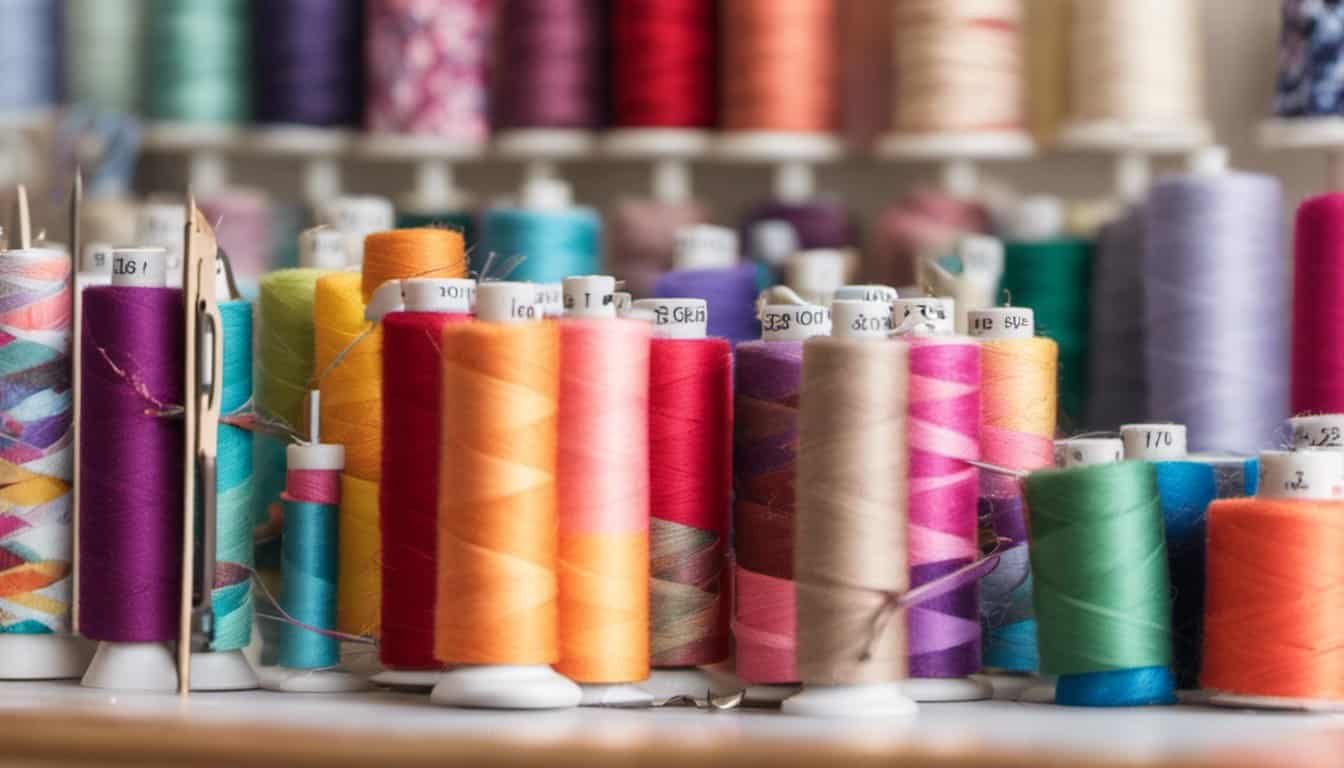Have you ever come across a fell stitch in your sewing projects and wondered what it’s all about? I’ve been there! A fell stitch is a versatile technique that can really elevate your work when used correctly. Whether you’re tackling a quilt, garment, or any handcrafted piece, mastering this stitch can make a noticeable difference.
In this article, I’ll walk you through what a fell stitch is and how to use it effectively. We’ll cover the basics, share some handy tips, and look at examples of projects where a fell stitch truly shines. By the end, you’ll feel confident incorporating this technique into your own creations, adding that extra touch of professionalism and flair.
What Is a Fell Stitch
A fell stitch is a durable, flat seam commonly used in tailoring, quilting, and garment construction. It creates a strong bond between two fabric layers, making it ideal for areas that require extra reinforcement, such as hems, seams, and edges.
Key Characteristics
- Structure: The fell stitch involves stitching close to the fabric edge, typically about 1/8 inch from the seam line. This placement ensures the seam remains flat and less visible.
- Durability: By reinforcing the seam with multiple rows of stitching, the fell stitch provides added strength, preventing fraying and extending the life of the garment or project.
- Versatility: Suitable for various fabrics, including cotton, denim, and heavy knit materials, the fell stitch adapts to different sewing needs.
Common Uses
- Hems: Achieving a clean, professional finish on garment hems, ensuring they stand up to regular wear and washing.
- Seams: Reinforcing side seams in pants, skirts, and dresses to enhance their longevity and maintain their shape.
- Edging: Securing edges of quilts and other fabric projects to prevent fraying and add a polished look.
Advantages
- Strength: Provides extra reinforcement, making seams more resistant to stress and strain.
- Aesthetics: Creates a neat, unobtrusive finish that maintains the garment’s or project’s overall appearance.
- Functionality: Ideal for high-wear areas, ensuring that items withstand regular use without compromising quality.
Tips for Using a Fell Stitch
- Even Stitching: Maintain consistent stitch length and spacing to ensure uniformity and strength across the seam.
- Proper Tension: Adjust your sewing machine’s tension settings to accommodate the fabric type, preventing puckering or loose stitches.
- Reinforcement: For added durability, consider backstitching at the beginning and end of each seam to secure the stitches in place.
By understanding the fell stitch’s properties and applications, you can effectively incorporate it into your sewing projects, enhancing both their durability and appearance.
Benefits of Using a Fell Stitch
Using a fell stitch offers several benefits to my sewing projects:
- Enhanced Durability: The fell stitch creates a strong bond between fabric layers, ensuring seams hold up under frequent wear and tear in items like jeans and upholstery.
- Clean, Professional Finish: It produces smooth, flat seams that elevate the appearance of my garments, quilts, and accessories, giving them a polished, tailored look.
- Versatile Application: I use the fell stitch with various fabric types, including cotton, denim, and wool, making it suitable for different materials in projects such as clothing and home decor.
- Reinforced Seams: The fell stitch is perfect for reinforcing high-stress areas like garment edges and quilt lines, preventing fraying and extending the longevity of my creations.
- Aesthetic Appeal: With its neat and understated appearance, the fell stitch maintains the visual integrity of my designs without adding bulk or disrupting patterns.
Materials and Tools Needed
To master the fell stitch, gather the right materials and tools. Here’s what you’ll need:
Choosing the Right Fabric
Selecting suitable fabric is crucial for the fell stitch. I prefer using sturdy materials like denim, cotton, and wool because they hold the stitch firmly. Lightweight fabrics may not withstand the strength of the fell stitch, while too thick fabrics can make stitching challenging. Ensure the fabric is pre-washed to prevent shrinking after sewing.
Selecting the Appropriate Thread
Using the correct thread enhances the durability and appearance of your seams. I recommend polyester or cotton-wrapped polyester threads for their strength and versatility. Choose a thread color that matches your fabric to maintain a clean, professional look. Avoid using overly glossy threads, as they can add unnecessary bulk to your stitches.
Essential Tools
In addition to fabric and thread, gather these essential tools:
- Sewing machine: Ideally one that allows for adjustable tension and stitch length.
- Needles: Use universal or denim needles for heavy fabrics.
- Scissors: Sharp fabric scissors ensure clean cuts.
- Pins: Hold fabric layers securely in place.
- Measuring tape: Accurate measurements are key for consistent stitching.
- Iron and ironing board: Pressing seams before and after stitching improves the finish.
Having these materials and tools ready will set you up for success as you incorporate the fell stitch into your sewing projects.
How to Execute a Fell Stitch
Executing a fell stitch involves precise stitching techniques that ensure durability and a professional finish. Here’s how you can master this method in your projects.
Step-by-Step Instructions
- Prepare Your Fabric: Align the fabric layers, ensuring edges are even. Press them with an iron to remove any wrinkles.
- Thread Your Needle: Use a polyester or cotton-wrapped polyester thread. Knot the end securely.
- Set Up Your Machine: Select a straight stitch on your sewing machine. Adjust the tension for a balanced stitch.
- Begin Stitching: Start stitching close to the edge, typically 1/8-inch from the fabric margin.
- Keep Even Stitches: Maintain consistent stitch length to ensure a flat seam.
- Finish Seam: Backstitch at the beginning and end to secure the stitches. Trim any excess thread.
Common Techniques
- Overlocking: Use an overlocker to create a clean edge before applying the fell stitch, preventing fraying.
- Zigzag Reinforcement: Incorporate a zigzag stitch along the seam for added strength in high-stress areas.
- Double Stitching: Apply two parallel rows of fell stitches for extra durability in items like jeans or upholstery.
- Topstitching: Add visible fell stitches on the fabric surface for decorative purposes while reinforcing the seam.
Tips for Mastering the Fell Stitch
Mastering the fell stitch requires attention to detail and consistent practice. Here are my top tips to help you perfect this versatile technique:
- Select the Right Thread
- Use polyester or cotton-wrapped polyester threads for durability and strength. These threads produce strong, long-lasting seams suitable for high-wear projects.
- Choose the Appropriate Needle
- Opt for universal or denim needles. Sharp needles prevent fabric puckering and ensure smooth stitching, especially with thicker materials like denim or canvas.
- Adjust Sewing Machine Tension
- Proper tension is crucial for even stitches. Start with a medium tension setting and test on scrap fabric. Adjust as needed to achieve balanced thread formation without puckering or loose loops.
- Maintain Consistent Stitch Length
- Set your machine to a stitch length of approximately 2.5 mm. Consistent stitch length ensures uniformity and enhances the professional appearance of your seams.
- Use a Walking Foot
- A walking foot helps manage multiple layers of fabric, preventing shifting and ensuring even stitching. This is especially helpful when working with bulky or layered materials.
- Press Seams Thoroughly
- After sewing, use an iron to press your seams flat. Pressing while the fabric is slightly warm helps set the stitches and creates a neat, professional finish.
- Reinforce High-Stress Areas
- Apply double stitching or zigzag stitches to areas that endure frequent stress, such as pocket edges or belt loops. Reinforcement adds extra strength and extends the lifespan of your garments or projects.
- Practice on Scrap Fabric
- Familiarize yourself with the fell stitch by practicing on different fabric types. Experimenting with various materials helps you understand how the stitch behaves and improves your technique.
- Keep the Fabric Aligned
- Ensure fabric edges are perfectly aligned before stitching. Misaligned fabrics can cause uneven seams and weaken the overall structure of your project.
- Use Proper Lighting
- Adequate lighting enhances visibility, allowing you to monitor your stitching closely. Good lighting reduces errors and ensures precision in your work.
By implementing these tips, you’ll enhance your ability to execute the fell stitch with confidence and achieve professional-quality results in all your sewing projects.
Conclusion
Working with the fell stitch has truly transformed the way I approach my sewing projects. It’s amazing how such a simple technique can add both strength and style to my creations. Whether I’m reinforcing a favorite pair of jeans or adding the finishing touches to a quilt, the fell stitch never disappoints.

I encourage you to give it a try and see the difference it can make in your own work. With a bit of practice and the right tools, you’ll soon be confident in using this versatile stitch to elevate your sewing game.

















